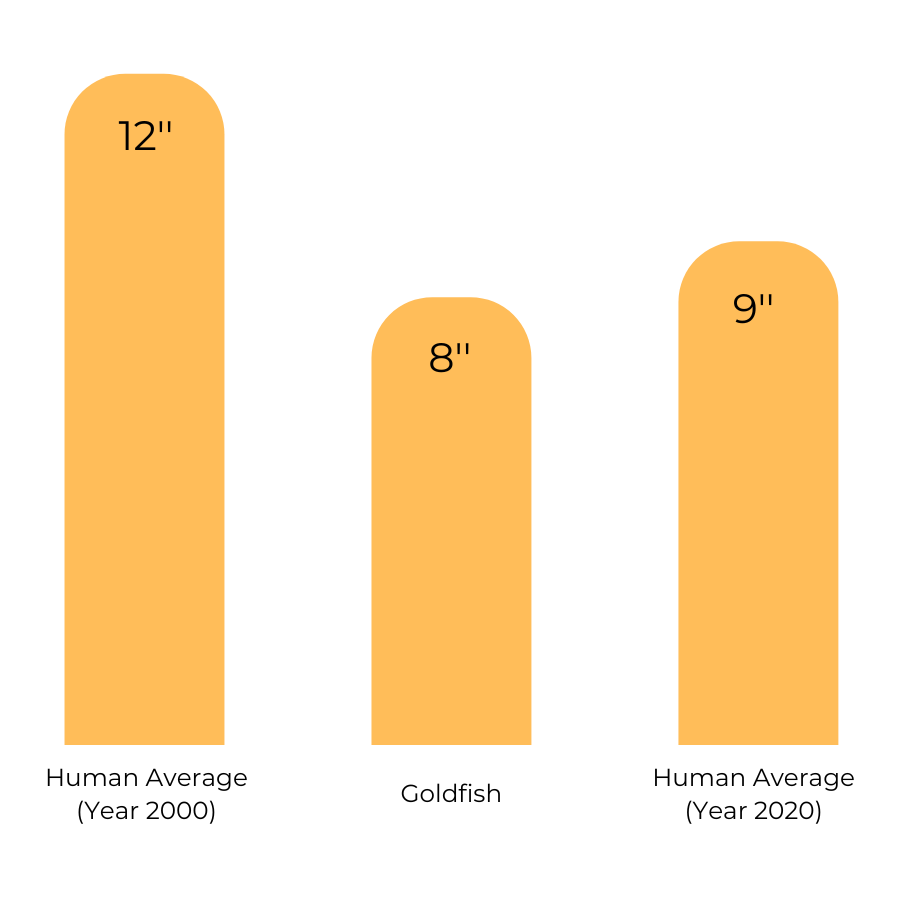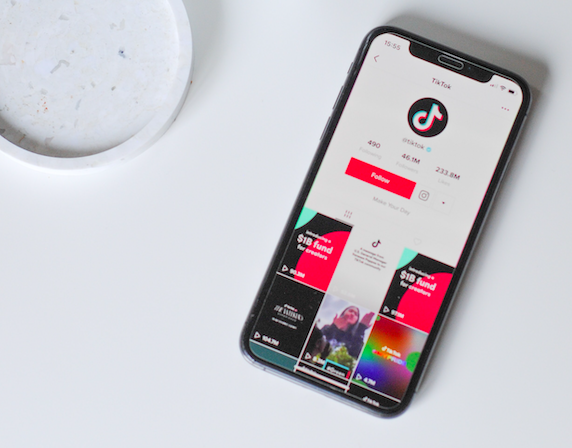Micro-content wins the attention war
25th November 2022
A silent war is waging, unlike the feuds of the past. Technological powerhouses, social media giants, and corporate megalopolises are locked horns over a new holy grail. This new war-worthy end goal is something so simple that we all take it for granted. It is our attention. You may ask, which white flag will level this war? The answer is micro-content.
The Attention Economy and consumer habits
Marketing scientists have conducted extensive research and concluded that if you have the attention, you have the sales (and profits). Obtaining this new holy grail enables engagement and users returning to your channels and profiles for content. The attention economy is disrupting due to its sheer scale and worth. There is one problem: our attention spans.
Our attention spans are getting shorter, we are more easily distracted, and our memories are poorer. We think this stasis is due to technology, but it's not the tech that is causing this misdemeanour. It’s the noise. The war for audiences to notice our businesses, our content, and us. The adverts, the emails offering discounts, the social media posts showcasing the next best product, the latest release of a novel series. The information noise that bombards us daily on our phones, computers, and TVs.
Some studies have shown that the average person who uses their phone has shaved nearly four seconds off their attention spans, from 2000 to 2015. On the other hand, gamers have better attention spans than non-gamers, so we cannot blame the technology itself. It is not the rise of technology that’s trimming our attention spans and making us more indifferent - it’s how and how much we use this technology in our daily lives.
Our attention span and infoxication
Attention Span Comparison
The endless stream of information is what's affecting our attention and it is brutal. It affects how we consume information and how we engage. Infoxication is difficulting the engagement, reach, and connection with our audiences: They switch off and move on in 8 seconds. As news appears on smartphones in real-time and social media reactions spread across the globe in seconds, the public discussion can appear accelerated and temporally fragmented.
We consume more content than ever, faster than ever, reducing our attention span. So then, what is the answer? How can we showcase the great content we have sweated to create if nobody is paying attention? Essentially, it’s a matter of adaptation.
Users prefer video
Video is undoubtedly the most engaging medium. Video is 12 times more successful than other content and generates higher engagement rates than text and image formats combined. Viewers retain 95% of a video's message, in massive contrast to 10% with text. Video also encourages action since a CTA after a video generates 380% more click-throughs than after text. People also prefer video: 66% say they would rather watch a short video to learn about a product.
Just as video crowned MTV in 1981, shaping the media world into a global one, it named Tik-Tok ‘king of the internet’ in 2021 for the ROAS (Return on Ad Spend) the video content brings its advertisers. The way to get and hold attention and cut through the noise is by dedicating efforts to video content.
The shorter, the better
As compelling as the stats are on video, so are the stats on short-form video or micro-content. People like micro-content. They can find out what they need to know easily and quickly, with bits of specific content that satisfy unique needs or desires.
According to the Hubspot 2022 Social Media Trends Report, short-form video ranks #1 for engagement. 47% of marketers surveyed think short-form videos are most likely to go viral and 85% of marketers surveyed say short-form video is the most effective format on Social Media.
Micro-content suits mobile format, and the mobile audience is viable and growing. Added advantages include cost-saving, it’s easy to make, micro-content is easily shareable and more interactive.
There are many different definitions, but the middle line is that a short-form video is between 15 seconds to 2 minutes. Short, sweet, packed with facts, and aesthetically pleasing are some of the keys to successful micro-content videos.
Micro-content and the media industry
Netflix’s new Fast-laughs feature uses micro-content as a series of short-form videos to promote fragments of funny shows that might appeal to the user. Fast Laughs has secured its place on TV after being only on the app, its natural place if we consider it inspired by TikTok or Instagram Stories.
News and sports companies use micro-content videos on their social media with great success. Apple is using short-form video and winning at it. In 2018, Apple planned to spend $1 billion on video content, focusing on micro-content. As leaders of the pack, this must have worked out for them since micro-content has recently become a must for start-ups and smaller businesses.
With so much bad news, there is good news in that micro-content video is easy to produce. You can DIY in a cost-effective, simple way. The digital age is upon us, and the relentless stream of information is not going away, so brands need to adapt to compete.
How can you adopt micro-content?
Companies that use video in their activity and marketing can adapt and benefit from this shift to become more efficient. Knox Media Hub can help them optimize their video micro-content creation workflows. More specifically, it enables automatic clipping based on timecode metadata and comments, and manual clipping.
For this, Knox Media Hub features its own native cloud video clipping tool and integrates the world’s fastest cloud video editor, Blackbird. With the possibility of completing whole edit and clipping processes of micro-content video pieces in the cloud, it can also directly publish content on social media and other platforms.
The digital age has brought rapidly advancing trends, unlike anything we have known before. In the past, trends were few, lasted longer, and following them or not had no real consequence. In today’s automated digital world, trends are a big deal, and there are harsh consequences if you don’t follow suit. One trend builds on another, and getting left behind can mean going under.
Maya Angelou said, “Do the best you can until you know better. Then when you know better, do better." And this is what trends are all about, we work out a better way and embrace it, as we should embrace change to keep up.



